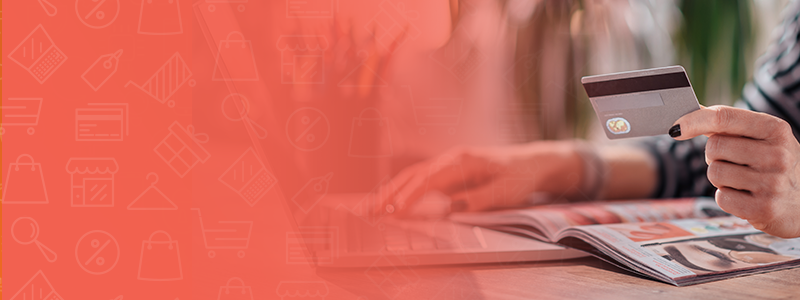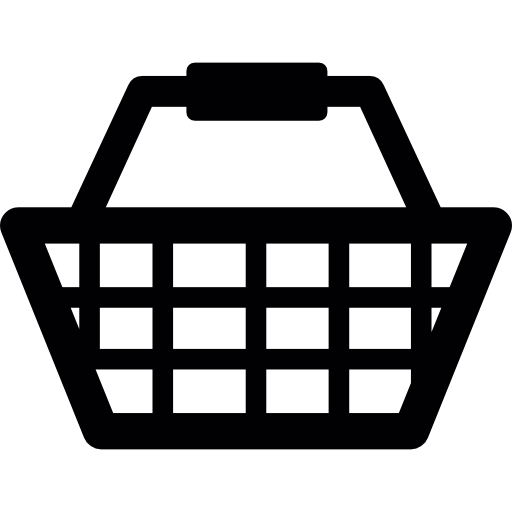
Remember stopping at the grocery store on the way home from work to pick up some ingredients for dinner? Or meeting friends for a day of shopping? Or visiting your favourite retail hotspot to check out the season’s latest trends?
Those simple activities have grounded to a halt as many retail stores have closed and approximately 25% of the world is under some form of lockdown.1
Like all industries, retail has been severely affected by COVID-19. According to the U.S. Commerce Department, retail sales dropped 0.5% in February 2020. For reference, retail sales increased by 4.3% in February 2019.2
In March 2020, U.S. retail sales slumped 8.7%, its worst monthly decline on record in the data available from the Census Bureau, which dates back to 1992.
The retail news isn’t much better in other parts of the world:
-
Hong Kong: retail sales dropped 44%.3
-
UK: like-for-like High Street sales decreased 0.9%.4
-
Canada: retail sales are expected to drop 0.2%.5
-
Italy: retail sales are forecasted to go down 1%.6
National attitudes support these figures. In Canada, for example, 96% of consumers believe the economy will be negatively impacted by COVID-19 and 78% of respondents expect it to be really bad. 7
Savvy retailers have been quick to adapt to this disruption and remain open with the help of mobile technology.
How Mobile Technology is Helping Retailers Adjust to the New Normal
For retail stores that are still open, like supermarkets and pharmacies, mobile technology allows customers and store staff to safely shop and work.
Beacon technology
Once a customer enters a store, and activates the store app, beacon technology tracks them as they make their way from aisle to aisle. When they arrive at a certain location, beacon technology serves up product-related alerts and promotional discounts.
-
How it helps during COVID-19: In order to observe safe social distancing, people must be at least six feet apart. When customers get too close (easy to do when concentrating on your shopping list), beacon technology can send out a warning signal alerting people to step back from each other and maintain a safe distance.
Scan-as-you-go
Using scan-as-you-go technology, shoppers can simply scan the items they are planning to purchase. When they are ready to checkout, they simply pay for the order and walk out of the store.
-
How it helps during COVID-19: Minimizing contact is critical to curbing the spread of COVID-19. Scan-as-you-go mobile technology eliminates the need for customers and cashiers to interact with each other. It also eliminates the need to handle or pass cash or credit cards back and forth.
Facial recognition software
When a customer opts into using this technology, facial recognition software identifies their face when they walk into the store. Upon recognition, the customer can receive custom text messages, offers and discounts from the retailer.
-
How it helps during COVID-19: Facial recognition software is being improved to positively ID people if they have taken the extra precaution of wearing a mask. It’s also being combined with thermal scanners to detect if customers are running a fever.
Want to Learn More About Mobile Technology In Retail?
Download From ‘Bricks to Clicks’: Navigating the Retail Revolution from SOTI
Mobile Technology and Retail After COVID-19
Nobody truly knows when the coronavirus pandemic will subside. As one prominent physician said: “You don’t make the timeline. The virus makes the timeline.”8
Yet, it’s possible to predict what new trends will become permanent based on how mobility and IoT are transforming retail. Shopping convenience and store cleanliness will continue to be top-of-mind among consumers. Retailers must find a way to fuse those elements with current expectations of a more personalized shopping experience.
It’s not inconceivable, for example, for stores to employ handheld devices to scan shopping carts for the presence of harmful viruses or bacteria. Any cart that’s deemed a health risk is taken out of circulation for a thorough cleaning. Some stores in Germany are even using 3D printers to print “hands-free” cart handles to allow for a safer, cleaner shopping experience.9
In addition to the mobile technology mentioned earlier, retailers are looking to add things like voice activated satellite navigation to their shopping apps. Customers say which item they want, and the app guides them to its location. This gets people in and out of the store quicker and minimizes contact with other shoppers and store employees.
Mobile technology can also be used to limit the amount of people inside a brick and mortar store. For example, retailers can contact customers as they’re about to enter alerting them that the store is at maximum capacity. Alternatively, customers can use apps to make appointments when they want to visit based on personal schedules or anticipated store traffic.
What Are People Buying Online During COVID-19?
With many retail locations closed and people staying home, online shopping has picked up steam. Since mid-March, 42% more of consumers are shopping online and are spending 30% more than they usually do for online purchases.10
The items people are stocking up on at grocery stores are experiencing the same demand surges as online retailers11:
 PROTECTION ITEMS PROTECTION ITEMS |
 MEDICINE MEDICINE |
 TOILET PAPER TOILET PAPER |
 PANTRY ITEMS PANTRY ITEMS |
|---|---|---|---|
| Disinfectants | Cold Meds | 1-Ply | Canned Items |
| Gloves | Cough & Flu | 2-Ply | Pasta & Rice |
| Masks | Pain relievers | Quilted | Oatmeal |
 817% 817% |
 175% 175% |
 186% 186% |
 64% 64% |
In China, housebound consumers are using online shopping to purchase fresh produce. During the Chinese New Year, vegetable deliveries increased 600% year-over-year. While over a 10-day period between late January and early February, 15,000 tons of groceries were purchased online.12
People are also heading online to buy things to keep them entertained while at home. For example, e-commerce sites in the UK have seen a spike in hobby items such as: puzzles, crafts, sewing kits, gardening items and colouring books.13
How Is Mobile Tech Helping the Supply Chain During COVID-19?
See how business-critical mobility turns supply chain pains into supply chain gains
Shop Safe
Follow these tips to keep you and your purchases safe:
Before going out
-
Go on your own (or have someone do it for you) and shop only once a week.
-
Bring hand sanitizer and wipes.
-
Wear gloves and/or a mask for extra protection.
At the store
-
Wipe the handles of your grocery cart or basket before you begin shopping.
-
Practice social distancing by keeping six feet apart from other shoppers.
-
Only touch the items you plan on purchasing.
Checking out
-
Use self-checkout if it is available.
-
Remember to be mindful of social distancing.
-
Use contactless payments if possible.
-
Wipe down your credit or debit card before and after use.
-
If paying with cash, sanitize your hands after the transaction is complete.
Back at home
-
Wash your hands after unpacking your groceries.
-
Wash fruits and vegetables before consuming them.
-
Wash your hands before and after preparing and eating food.
- Statista, What Share of the World Population us Already on COVID-19 Lockdown?
- Reuters, U.S. Retail Sales Post Biggest Drop in a Year; Coronavirus Drag Coming
- Bloomberg, Hong Kong Retail Sales Plunge Record 44% in February
- Retail Gazette, High Street Sales Battered by Storms and Coronavirus Fears
- Trading Economics, Canada Retail Sales MoM
- Trading Economics, Italy Retail Sales MoM
- Deloitte, COVID-19 Voice of Canadians and Impact to Retailers
- The Hill, “You Don’t Make the Timeline. The Virus Makes the Timeline”
- Materialise, Hands-Free 3D Printed Shopping Cart Handles to Reduce Coronavirus Spread
- Search Engine Land, COVID Consumers: Pessimistic but Spending More Online
- Adobe, How COVID-19 Is Impacting Online Shopping Behavior
- eMarketer, Coronavirus’s Impact on Consumers and Businesses in China
- The Guardian, Britons Go On Shopping Spree to Ease Grind of COVID-19 Confinement



